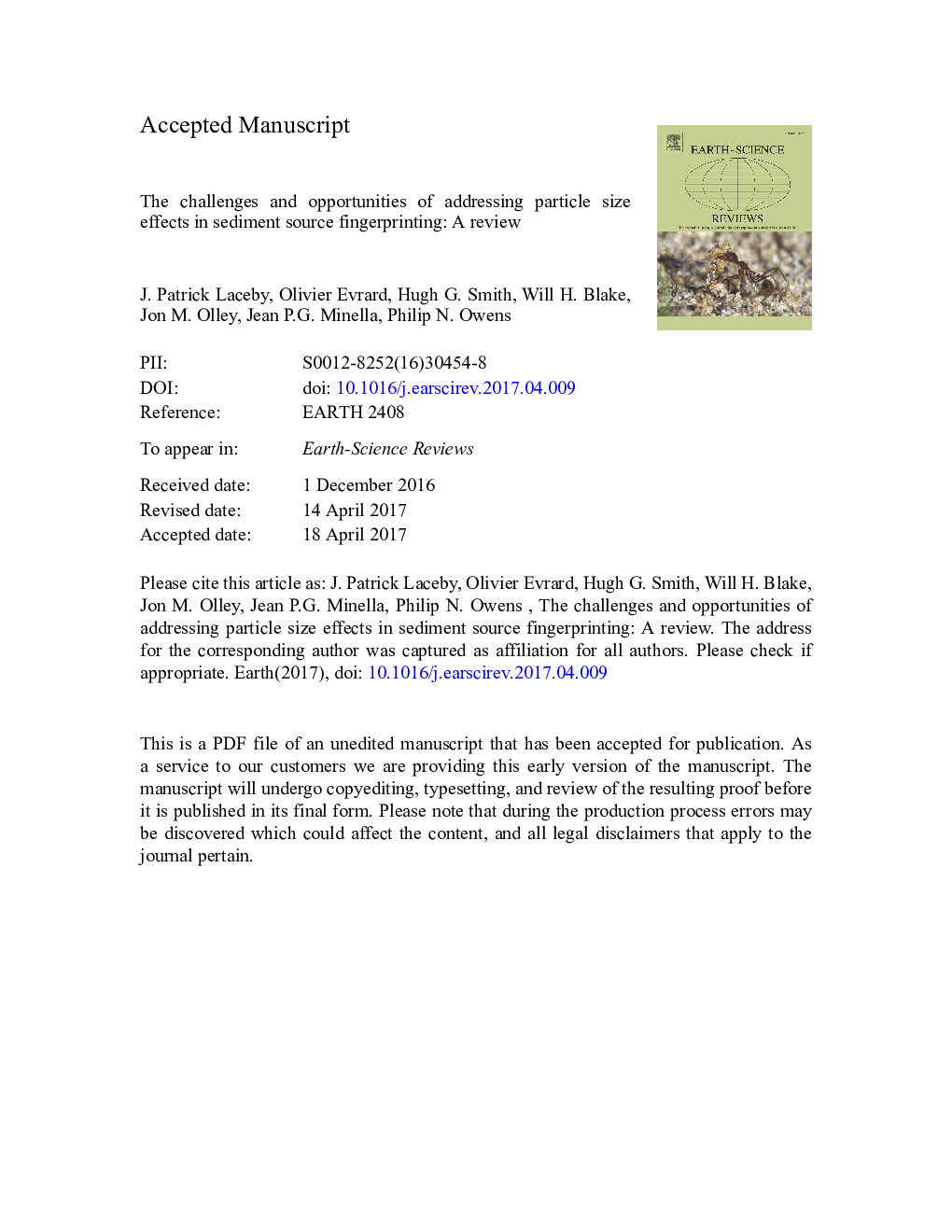| Article ID | Journal | Published Year | Pages | File Type |
|---|---|---|---|---|
| 5785125 | Earth-Science Reviews | 2017 | 50 Pages |
Abstract
Tracing sediments back to their catchment sources using biogeochemical and physical fingerprints involves multiple assumptions. One of the most fundamental assumptions is that these fingerprints are consistent during sediment generation, transportation, and deposition processes. Accordingly, the biogeochemical fingerprints used to trace sediment must remain constant, during detachment and redistribution, or they must vary in a predictable and measurable way. One key challenge to this assumption is the sorting effect of particles by size during detachment, mobilization, transportation and deposition processes. Owing to the notable effect of particle size on sediment fingerprints, we believe it is important to review the main approaches used to address the effects of changes in particle size composition on sediment fingerprints. The two main approaches to addressing particle size impacts on fingerprint properties are: fractionation of source and sediment material to a narrow particle size range (e.g. isolation of < 10 μm or < 63 μm fractions), and concentration corrections (e.g. normalizing concentrations by parameters such as specific surface area). These approaches are often used in combination. The utility of fractionation and corrections to address particle size effects has received increasing attention and the relative merits of these procedures have been subject to debate. Accordingly, alternative techniques to address particle size effects in sediment fingerprinting studies are being adopted. For example, a tributary tracing technique or edge-of-field samplers may minimize particle size effects on sediment source fingerprints. The interrelationships between particle size and biogeochemical tracer properties suggest that particle size may also contribute to the formation of contrasts in sediment fingerprints between sources. Indeed, there may be a significant opportunity to derive further sediment source information through comprehensively investigating and unravelling the complexity of particle size-biogeochemical interactions.
Related Topics
Physical Sciences and Engineering
Earth and Planetary Sciences
Geology
Authors
J. Patrick Laceby, Olivier Evrard, Hugh G. Smith, Will H. Blake, Jon M. Olley, Jean P.G. Minella, Philip N. Owens,
